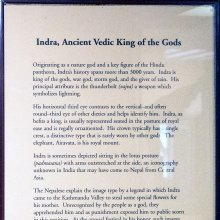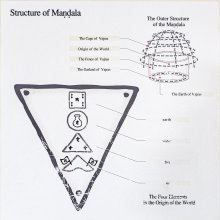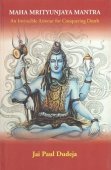Cage, Cāge: 2 definitions
Introduction:
Cage means something in the history of ancient India. If you want to know the exact meaning, history, etymology or English translation of this term then check out the descriptions on this page. Add your comment or reference to a book if you want to contribute to this summary article.
Images (photo gallery)
India history and geography
Source: Singhi Jain Series: Ratnaprabha-suri’s Kuvalayamala-katha (history)1) Cages were made for pet birds, as part of the tasks performed to beautify the Sleeping chamber (of young ladies) in Ancient India, as depicted in the Kathās (narrative poems) such as Uddyotanasūri in his 8th-century Kuvalayamālā (a Prakrit Campū, similar to Kāvya poetry).—The Kuvalayamala (779 A.D.) is full of cultural material which gains in value because of the firm date of its composition. [...] Page 83.3-9: Here is the description of the house or the sleeping chambers of young ladies which were beautified for the reception of their husbands. The select items in this list are as follows: [e.g., placing the pet birds in the cages (jaṃta-sauṇae);] [...]
2) Cages (holding parrots and magpies) were commonly depicted on the Saṃsāracakra paintings (representing scenes of human life), in ancient India, according to the Kuvalayamālā.—Page 185.21 f.: Here follows a description of a printed scroll illustrating the Jaina conception of saṃsāracakra. [...] The saṃsāra-cakra illustrated the three worlds of hell, human world and the world of gods. [For example:] Persons shooting animals with bow and arrow; a person holding a naked sword and showing feats of swordsmanship; parrots and magpies put in cages for amusement

The history of India traces the identification of countries, villages, towns and other regions of India, as well as mythology, zoology, royal dynasties, rulers, tribes, local festivities and traditions and regional languages. Ancient India enjoyed religious freedom and encourages the path of Dharma, a concept common to Buddhism, Hinduism, and Jainism.
Languages of India and abroad
Kannada-English dictionary
Source: Alar: Kannada-English corpusCāge (ಚಾಗೆ):—[noun] deep trouble; great loss and sorrow; disaster; calamity.
Kannada is a Dravidian language (as opposed to the Indo-European language family) mainly spoken in the southwestern region of India.
See also (Relevant definitions)
Ends with: Arapiccage, Beccage, Caccahuccage, Haccage, Halacage, Halaccage, Keccage, Kemcage, Noccage, Ugurubeccage.
Full-text (+108): Panjara, Vitamsa, Pinjara, Asthipanjara, Shalara, Ksharaka, Kulayika, Vajrapanjara, Panjaraka, Pimjara, Panjarakapinjala, Sharapanjara, Panjarashuka, Vamshashalaka, Bandha, Maragudu, Vihamgavati, Mrigalaya, Sihapanjara, Hadanca Panjara.
Relevant text
Search found 107 books and stories containing Cage, Cāge; (plurals include: Cages, Cāges). You can also click to the full overview containing English textual excerpts. Below are direct links for the most relevant articles:
The Jataka tales [English], Volume 1-6 (by Robert Chalmers)
Jataka 239: Harita-Māta-jātaka < [Book II - Dukanipāta]
Jataka 319: Tittira-jātaka < [Volume 3]
Jataka 375: Kapota-jātaka < [Volume 3]
The Mahavastu (great story) (by J. J. Jones)
Chapter XXIII - Jātaka of the Bird (Śakuntaka) < [Volume II]
Chapter XXIV - Jātaka of the Tortoise (Kacchapa) < [Volume II]
Chapter XXVI - Jātaka of the Bird (Śakuntaka) (2) < [Volume II]
Manasara (English translation) (by Prasanna Kumar Acharya)
Chapter 50 - The bodily ornaments and house-furniture (bhūṣaṇa)
Chapter 15 - The columns (stambha)
Chapter 3 - The classification of Architecture (vāstu-prakaraṇa)
Vastu-shastra (3): House Architecture (by D. N. Shukla)
Folk Tradition of Bengal (and Rabindranath Tagore) (by Joydeep Mukherjee)
Related products


